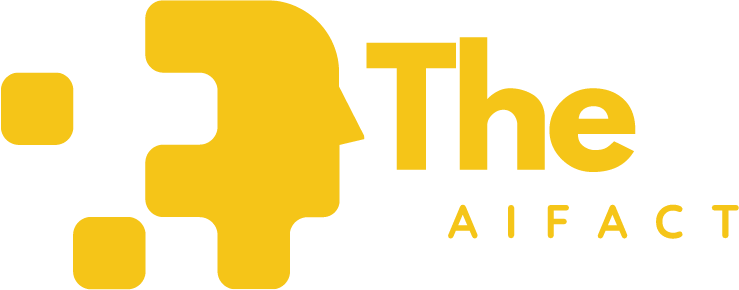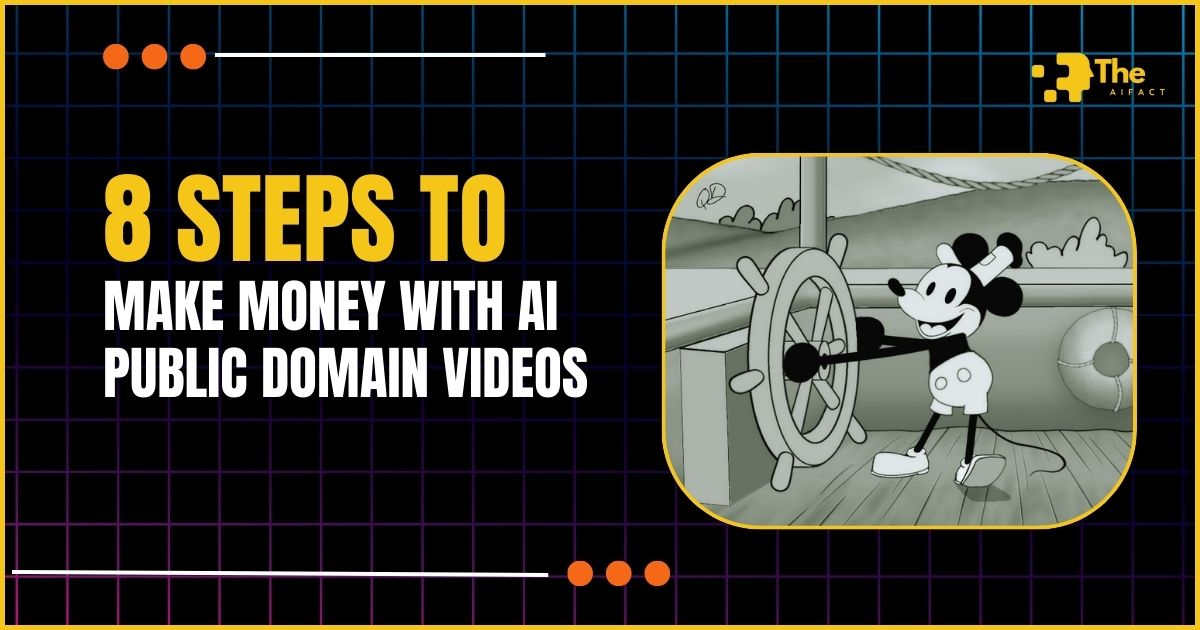Imagine stepping back to the enchanting era of black-and-white animation, where each frame was a portal to a magical world.
Among these treasures, “Steamboat Willie” stands out, not just as a masterpiece but as a cornerstone that paved the way for the vibrant world of Disney as we know it.
But here’s the twist: “Steamboat Willie” has sailed into the public domain, making it a treasure chest open for all to dive into.
This transition is monumental. It’s not just about one animation; it signifies a sea change for creators everywhere. Public domain is a realm where the copyright has expired, freeing up works to be used by anyone without permission or fees.
This is akin to finding a gold mine for us, the creative folks. Suddenly, the building blocks of animation history are at our fingertips, ready to be reimagined, remixed, and reborn in our creations.
So, what does this mean for you and me? It’s a call to arms to explore, create, and innovate. With “Steamboat Willie” and countless other works now in the public domain, the possibilities are as vast as our imaginations.
Let’s embark on this journey together, exploring how we can harness these treasures to craft content that captivates, entertains, and even turns a profit. Welcome to a world where history meets opportunity.
Read more:
1: Steamboat Willie and Public Domain
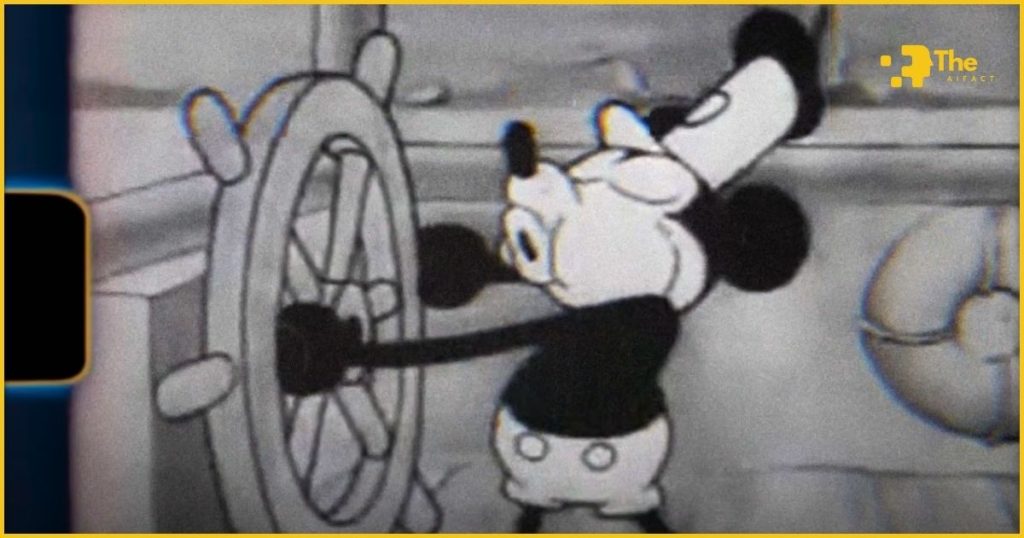
The concept of the public domain is a beacon of pure freedom for creativity, transcending the formalities it might initially suggest.
It represents an expansive collection of works released from the confines of intellectual property laws with no copyright, trademark, or patents to navigate.
This liberation means that:
- Works in the public domain can be used freely, allowing for remixing, transforming, and building upon without needing permission or the burden of royalties.
- It establishes a communal creative playground where innovation and sharing flourish without restriction.
A particularly notable event in the animation and copyright landscape is the entry of Mickey and Minnie Mouse into the public domain.
This marks a significant shift as these beloved icons, integral to countless childhood memories and dreams, become universally accessible.
Their transition from tightly guarded copyright figures to public domain characters means they can now:
- Be featured in new stories, art, and products by anyone, anywhere.
- Catalyze creativity across various mediums and platforms, from YouTube to digital art and educational content.
For content creators, this development is nothing short of revolutionary. The opportunity to incorporate Mickey and Minnie into creative projects is not just a nod to nostalgia.
But a call to innovate with universally recognized icons, potentially pushing your content to unparalleled levels of engagement and connection.
This democratization of creativity serves as both an invitation and a challenge:
- It invites us to explore and innovate with cherished characters, blending the old with the new.
- It challenges us to add unique value and originality, reminding us that our success and impact depend on how we leverage this opportunity.
Embracing the public domain as a resource opens up endless possibilities for content creation, urging us to craft content that resonates across generations and leaves a lasting mark on the cultural landscape.
2: The Potential of Public Domain Content

The Potential of Public Domain Content unfolds as an adventure into a realm filled with unbounded possibilities for creativity and innovation.
However, wielding this power demands a careful balance of legal and ethical considerations to ensure these treasures are used wisely and profitably.
Legal Aspects:
- A treasure trove for creators: Public domain content allows using historical, cultural, and artistic works without copyright constraints.
- Due diligence is crucial: Verify that works are genuinely in the public domain, as rules vary by country, typically requiring 50 to 70 years after the creator’s death.
- Avoid unintentional copyright infringement: Ensuring content is genuinely public domain is essential to navigating legal boundaries successfully.
Ethical Considerations:
- Honor the original creator’s legacy: Adding value and respect to repurposed works pays homage to their history.
- It’s not just about taking: Ethical use involves building upon the past to forge something innovative and exciting.
Strategies for Adding Value:
- Innovate: Elevate your projects using public domain content as a foundation for unique creations.
- Modernize classic stories.
- Combine elements from various works.
- Use historical images in new contexts.
- Quality matters: The distinction of your project lies in the quality of production editing, animation, and narrative structure that you bring to the raw materials from the public domain.
- Engage your audience: Tailor your content to resonate with viewers by integrating public domain content with contemporary themes or issues, forging a powerful connection.
- Educate: Adding context to historical works can make them relevant and intriguing for today’s audience, offering insights and sparking curiosity.
The journey through the public domain is not just about leveraging available resources; it’s about respecting the past and boldly stepping into the future.
The canvas of public domain content is vast and varied. The masterpiece you create from it will reflect your unique blend of vision, skill, and appreciation for timeless works.
3: Sourcing Public Domain Content
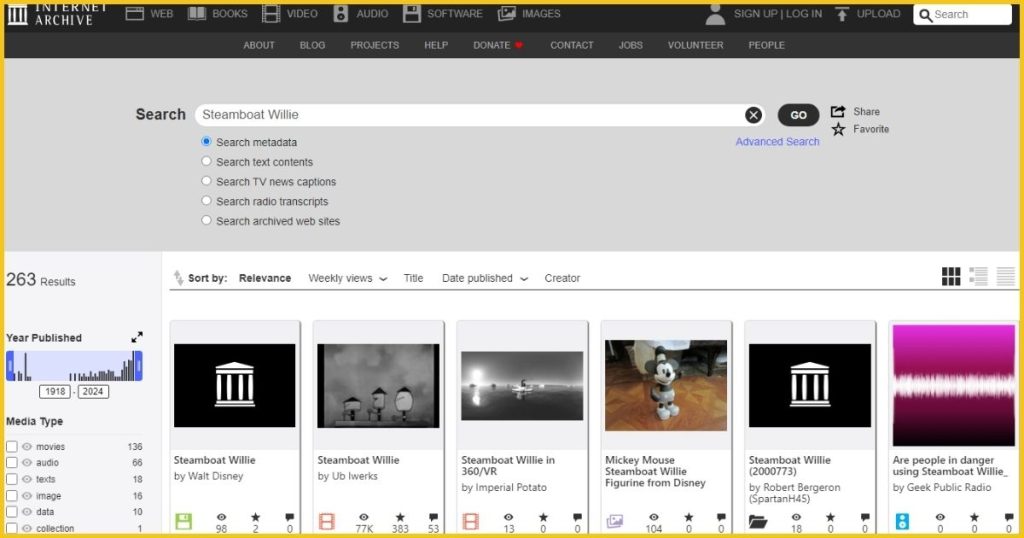
Finding public domain content is like embarking on a digital treasure hunt, and the Internet Archive is your map.
This online library is a vault filled with millions of free books, movies, software, music, websites, and more. It’s a primary resource for anyone looking to dive into the wealth of freely available content for creative use.
Navigating the Internet Archive
- Start at the Homepage: Visit archive.org and prepare to be amazed by the range of materials available at your fingertips.
- Use the Search Bar: Looking for something specific like “Steamboat Willie”? Just type it into the search bar. The more specific you are, the better your chances of finding what you need.
- Filter Your Search: You can refine your search results by media type, year, topics & subjects, and more. This helps narrow down the vast options to what’s most relevant to you.
Verifying Public Domain Status
Let’s use “Steamboat Willie” as an example. When you find the item in the Internet Archive:
- Check the Details: Each item on the Internet Archive includes a details page. You’ll find information about the item, including its copyright status. Look for terms like “Public Domain” or “No Known Copyright Restrictions.”
- Review Copyright Notices: Some items might still have copyright notices attached despite being in the public domain. This is often due to differences in copyright laws across countries. The details page should provide clarity on its status.
- Understand the Terms: The Internet Archive often includes a usage statement. Make sure the way you plan to use the content aligns with these terms. For “Steamboat Willie,” you’d look for confirmation that it’s indeed public domain, meaning you’re free to use it without legal restrictions.
A Word of Caution
While the Internet Archive is a fantastic resource, always double-check the public domain status of a piece.
Copyright laws can be complex, and just because something is available online doesn’t always mean it’s free to use commercially.
When in doubt, consult a copyright expert or perform additional research to ensure you’re on solid ground.
Using “Steamboat Willie” as an example, you would note that it’s marked as public domain due to the copyright expiration.
This clear indicator allows creators to use this iconic piece in their projects, whether in video content, merchandise, or educational materials, without worrying about copyright infringement.
4: Crafting Content with AI
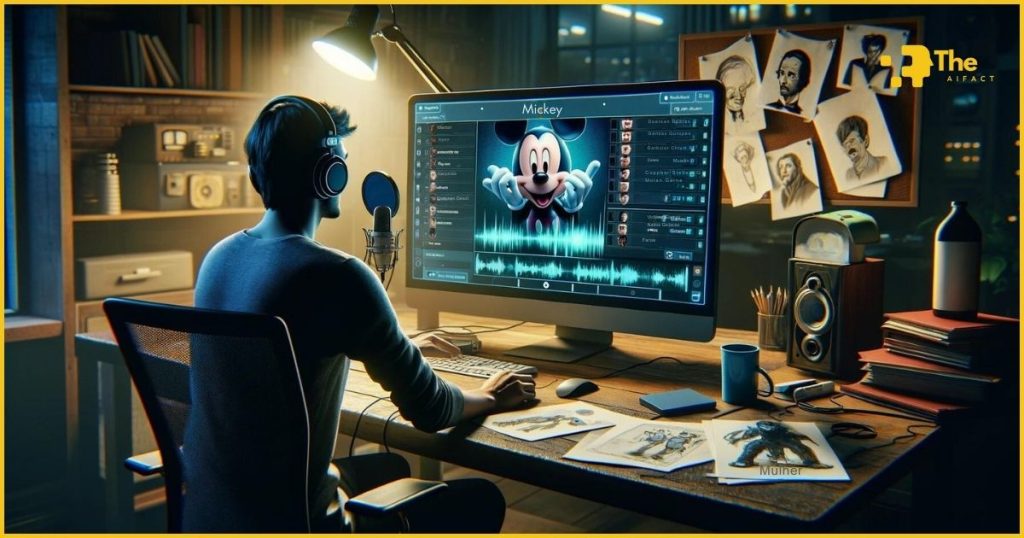
Combining public domain content with cutting-edge AI tools can transform the old into something dazzlingly new.
Let’s dive into how to craft compelling video content using AI, focusing on Google’s Gemini for scriptwriting and ElevenLabs for voice synthesis.
Step 1: Scriptwriting with Google Gemini
Google’s Gemini is like having a creative partner who never sleeps. This AI-driven tool can help you write scripts that bring public domain characters and stories to life in fresh, engaging ways.
- Getting Started: Access Gemini through Google’s suite of tools. If it’s your first time, you’ll be amazed at how intuitive it is.
- Feeding Your Muse: Start by giving Gemini a brief. For example, if you’re working with “Steamboat Willie,” you might ask for a script that reimagines Mickey’s river adventure for modern audiences.
- Refining the Draft: Gemini will generate a draft based on your prompt. From here, it’s all about collaboration. Refine your request based on the initial output, asking for more detail, humor, or whatever your creative vision demands.
- Finalizing Your Script: Once you’re happy with the narrative flow and dialogue, it’s time to move on to giving your characters a voice.
Step 2: Bringing Characters to Life with ElevenLabs
ElevenLabs is your go-to for turning text into natural-sounding speech. This powerful AI tool can give your public domain characters a voice that resonates with today’s audience.
- Choose Your Voice: First, explore the voice library in ElevenLabs. You’re looking for a voice that fits your character’s personality. For Mickey, maybe it’s something playful and energetic.
- Text-to-Speech Conversion: Copy your finalized script from Gemini into ElevenLabs’ text box. Then, select the voice you’ve chosen and hit ‘generate.’ In moments, you’ll hear your script come to life.
- Tweaking for Perfection: Listen to the output. If something doesn’t sound quite right, you can adjust the pacing, tone, and even the emotion of the speech. The goal is to make your character sound as engaging and authentic as possible.
Step 3: Crafting Your Video
Now that you have your script and voiceover:
- Select Your Public Domain Clips: Using content from the Internet Archive, choose clips that match the scenes from your script. If you’re working with “Steamboat Willie,” you might use the original animation clips as a base.
- Editing Magic: Combine your AI-generated voiceover with the public domain clips using video editing software. This is where your creative vision comes to life as you sync the voice with the visuals, add effects, and fine-tune the pacing.
- Adding the Final Touches: Don’t forget about music and sound effects! These can also be sourced from public domain archives, adding depth and emotion to your video.
Voila!
You’ve just created a unique piece of content that bridges the past and present, all with the help of AI. Google’s Gemini and ElevenLabs are just the beginning. The AI landscape is rich with tools that can help amplify your creativity, making it easier than ever to produce content that stands out in a crowded digital world. Embrace these technologies, and let them take your storytelling to new heights.
5: Editing and Finalizing Your Video
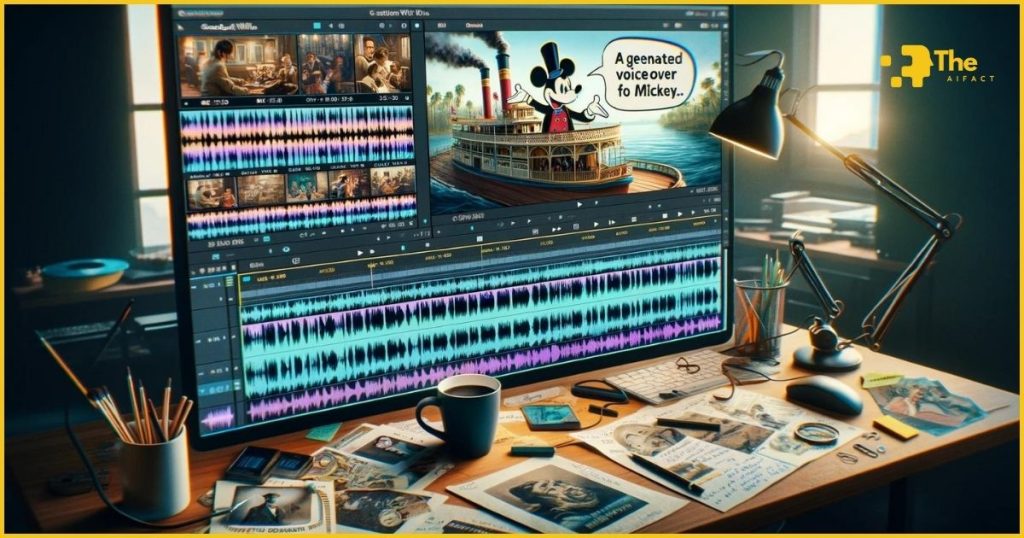
Once you’ve crafted your script and synthesized your voiceover, the next step is to bring your vision to life through video editing. CapCut is a user-friendly yet powerful tool, ideal for beginners and seasoned creators.
Here’s how to use CapCut to edit and finalize your video, ensuring it’s ready for YouTube and beyond.
Getting Started with CapCut
- Importing Files: Open CapCut and start a new project. Import your public domain video clips and AI-generated voiceover files into the project. CapCut’s drag-and-drop interface makes this process straightforward.
- Syncing Audio with Video: Your next task is to align the voiceover with the corresponding video clips. Use the timeline view to match the audio cues with the visual elements. It’s like piecing together a puzzle where each word and scene fits perfectly.
- Adjusting Volumes: To ensure your voiceover doesn’t drown out the background music or vice versa, adjust the volume levels. Click on the audio track to access volume controls. Aim for a balance where the voiceover is clear and the music enhances the mood without overpowering.
- Cutting and Trimming: With your basic sync in place, it’s time to refine your edit. Use CapCut’s cutting tool to remove unnecessary footage and tighten your narrative. Trimming allows you to adjust the length of your clips to match the pacing of your voiceover.
- Adding Transitions and Effects: To smooth out cuts between scenes or emphasize certain moments, explore CapCut’s transitions and effects. A well-placed transition can enhance the storytelling, making your video more engaging.
- Choosing the Right Aspect Ratio: The standard aspect ratio for YouTube is 16:9. CapCut allows you to easily adjust your project’s aspect ratio to fit this format. This step is crucial for ensuring your video looks great on all devices, from smartphones to desktops.
- Exporting Your Video: Once you’re satisfied with your edit, it’s time to export. Choose the highest quality setting to ensure your video looks crisp on YouTube. CapCut provides options for direct exporting to various platforms, but saving a local copy gives you more flexibility.
Why Aspect Ratio Matters
- Viewer Experience: The correct aspect ratio ensures your video fills the screen without unsightly black bars, providing a seamless viewing experience.
- Platform Compatibility: Each social platform favors different aspect ratios. For YouTube, adhering to the 16:9 ratio means your video will display correctly across all viewing scenarios.
Final Touches
Before you hit the upload button, preview your video one last time. Look for any discrepancies in audio sync, visual alignment, or pacing. Remember, the devil is in the details, and these final touches elevate your video from good to great.
6: Branding and Promotion
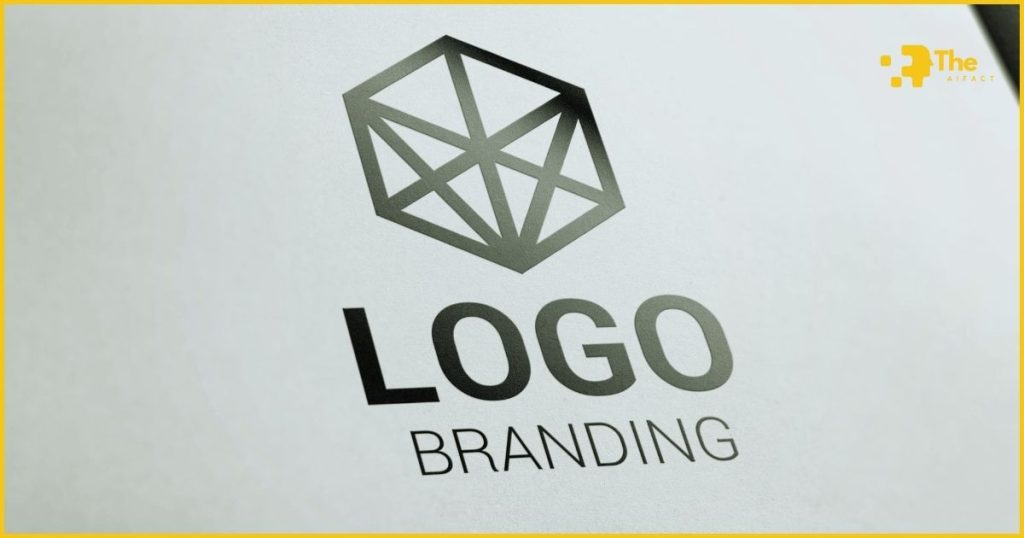
In the vast sea of YouTube, standing out requires more than just unique content; it demands distinctive branding. Your channel name and logo aren’t just identifiers.
They’re the cornerstone of your brand’s identity, the first impression viewers have of you.
Let’s dive into crafting a memorable channel name and logo with Canva and understand why effective branding is your ally in the crowded digital arena.
Crafting Your Channel Name
- Reflect Your Content: Your channel name should echo the essence of your videos. It’s a balancing act between being descriptive and imaginative. If your content revolves around public domain classics reimagined, weave that into your name.
- Be Memorable and Searchable: Choose a name that sticks in the mind yet is easy to spell. You want your audience to easily find you, not get lost in the search results.
- Check Availability: Before settling on a name, ensure it’s not already used. A unique name helps avoid confusion and strengthens your brand identity.
Designing Your Logo with Canva
Canva is a user-friendly graphic design tool that makes logo creation accessible to everyone, regardless of design experience.
- Start with Inspiration: Browse Canva templates for logo ideas. Look for designs that resonate with your channel’s theme and personality.
- Customize Your Design: Once you’ve chosen a template, it’s time to make it your own. Canva allows you to adjust colors, fonts, and graphics. For a channel focused on bringing public domain content to life, consider elements that reflect this, perhaps a vintage film reel or a classic microphone.
- Keep It Simple: A great logo is easily recognizable and scales well across different mediums. Avoid clutter; your logo should be identifiable even at thumbnail size.
- Export with Transparency: When you’re happy with your design, export it with a transparent background. This flexibility lets you overlay your logo on your videos and promotional materials without a jarring background box.
The Role of Effective Branding
- Creates a Lasting Impression: Your logo and channel name are often the first things viewers notice. Make them count. A strong, cohesive brand image can turn a casual viewer into a loyal subscriber.
- Builds Trust and Recognition: Consistent branding across your videos, thumbnails, and social media platforms builds familiarity. Familiarity breeds trust, and trust encourages engagement and sharing.
- Differentiates You from Competitors: In a niche as expansive as YouTube, your brand is your signature. Effective branding distinguishes you from others, highlighting your unique take on content.
7: Adding Finishing Touches
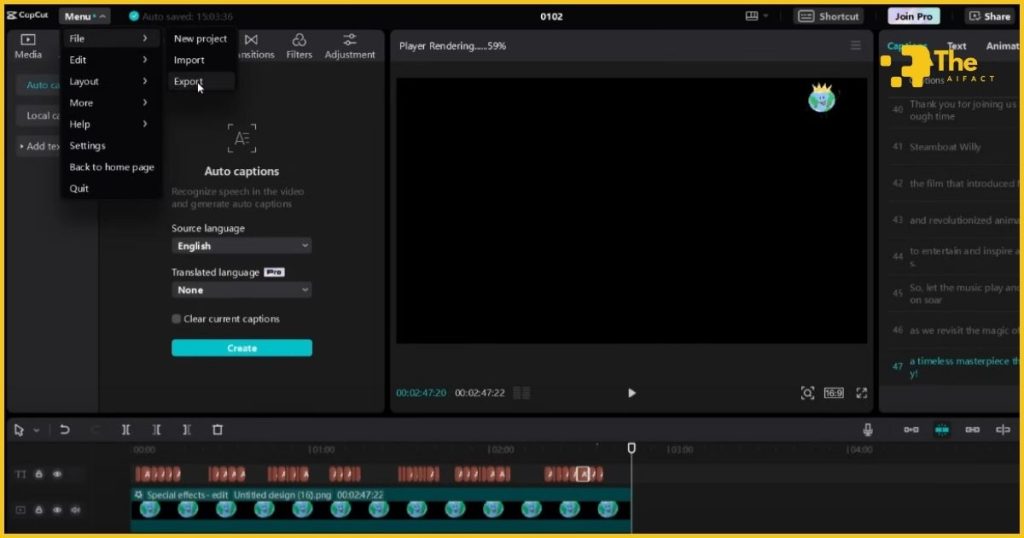
As you approach the final stage of your video creation journey, you must polish your masterpiece with finishing touches that enhance accessibility and aesthetic appeal.
Subtitles and visually appealing templates play a pivotal role in this process, ensuring your content is inclusive and engaging.
Let’s walk through how to add these elements effectively and prepare your video for the world to see.
Incorporating Subtitles
- Why Add Subtitles: Subtitles make your content accessible to a broader audience, including those who are deaf or hard of hearing non-native speakers or viewers who prefer watching videos without sound. Additionally, subtitles can boost engagement and SEO, making your content more searchable.
- Creating Subtitles: You can manually transcribe your video or use automated tools in video editing software or platforms like YouTube. For accuracy, review and edit the automatic transcription.
- Customizing Subtitles: Once you have your transcript ready, it’s time to add it to your video. Use video editing software that allows you to customize your subtitles’ font, size, and color to ensure they’re readable and unobtrusive. Aim for a font size and color that stands out against your video background but doesn’t distract from the content.
Choosing Templates for Visual Appeal
- Selecting Templates: Many video editing platforms offer templates for subtitles that include different animations, colors, and styles. Choose a template that complements your video’s theme and tone. A minimalistic template works well for serious content, while something more playful can enhance lighter videos.
- Customization: Tailor the template to fit your brand identity. Adjusting the colors to match your logo or using fonts similar to those in your intro can create a cohesive look throughout your video.
Export Process and Final Video Checks
- Exporting Your Video: After adding subtitles and final touches, preview your video to ensure everything looks and sounds as intended. Export your video in the highest quality possible, adhering to the recommended settings for your target platform, typically 1080p or higher for YouTube.
- Final Checks Before Uploading:
- Quality Check: Watch the exported video fully to catch any missed errors or glitches.
- Audio and Visual Sync: Ensure the audio is perfectly synced with the video, especially if you’ve added voiceovers or adjusted clip lengths.
- Subtitles Accuracy: Verify the subtitles for accuracy, timing, and readability. Subtitles should appear and disappear precisely with the spoken words.
- Branding Elements: Confirm that your logo and any branding elements are correctly placed and visible.
- Ready for Upload: With your video polished and perfected, it will be shared with the world. Upload it to your YouTube channel, add a compelling title, description, and tags to optimize for search, and select an eye-catching thumbnail that draws viewers in.
8: Navigating Copyright Challenges
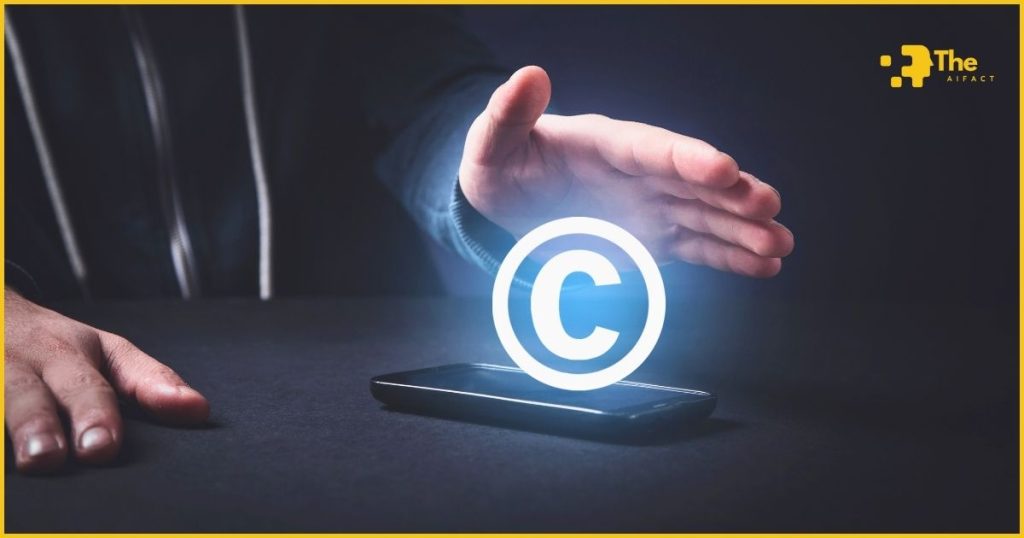
Diving into the world of content creation is thrilling, yet it sometimes brings us face-to-face with the daunting world of copyright laws. Let me share a personal anecdote that underscores the importance of patience and persistence in navigating these waters.
A Copyright Claim Encounter
I once uploaded a video that included a short clip from a 1920s film I believed was in the public domain.
To my surprise, shortly after uploading, I received a copyright claim. The claimant argued that their company held exclusive rights to the film’s distribution despite its public domain status.
This was a heart-sinking moment; my video, into which I had poured hours of work, was now under scrutiny, potentially limiting its visibility and monetization.
The Dispute Process
Determined not to let my efforts go to waste, I decided to dispute the claim. Here’s how I navigated the process:
- Research: I delved into the film’s copyright status, gathering evidence that it was in the public domain. Official copyright databases and historical records were invaluable resources.
- Filing a Dispute: Armed with evidence, I filed a dispute through the platform’s copyright dispute process. This required a detailed explanation of why the claim was incorrect, emphasizing the film’s public domain status.
- Patience is Key: After submitting the dispute, the waiting game began. These processes can take weeks, during which your video might remain restricted.
- Persistence Pays Off: It was a test of patience, but eventually, the claim was released. The platform recognized the error, and my video was cleared of copyright infringement.
Lessons Learned
- Do Your Homework: Thorough research and documentation are crucial before using any content, even if it’s supposedly in the public domain. This preparation can save you a lot of trouble down the line.
- Understand the System: Familiarize yourself with the copyright dispute process on whichever platform you use. Knowing the steps involved demystifies the process and prepares you for action if needed.
- Patience and Persistence: These situations can be frustrating and time-consuming. It’s essential to remain patient and persistent, as justice in copyright disputes can prevail.
Conclusion
The journey through public domain content opens opportunities for creative exploration and monetization.
It’s a treasure trove that invites us to reimagine, reinterpret, and reinvent, paving the way for unique creations that can captivate and inspire. This exploration is not just about leveraging what exists.
It’s about adding your voice to your vision and enriching the cultural tapestry for all to enjoy. I encourage you to dive into the vast expanse of public domain resources.
Harness these timeless pieces, blend them with your innovation, and watch as your content takes on new life, reaching heights previously unimagined. Let the public domain be your canvas and your creativity the brush.
Together, they hold the power to achieve success and make a lasting impact on the world of content creation.
